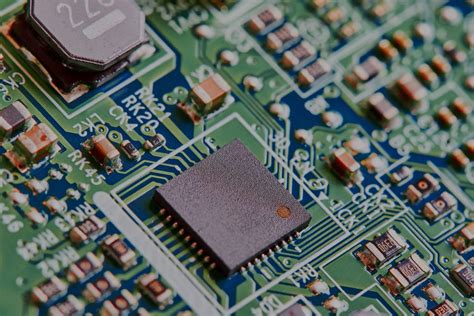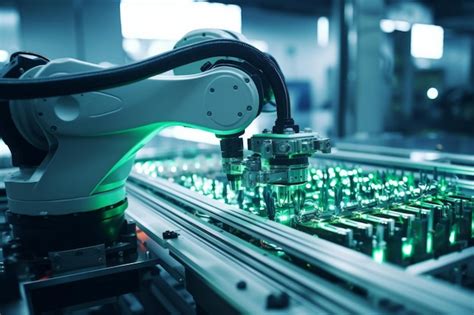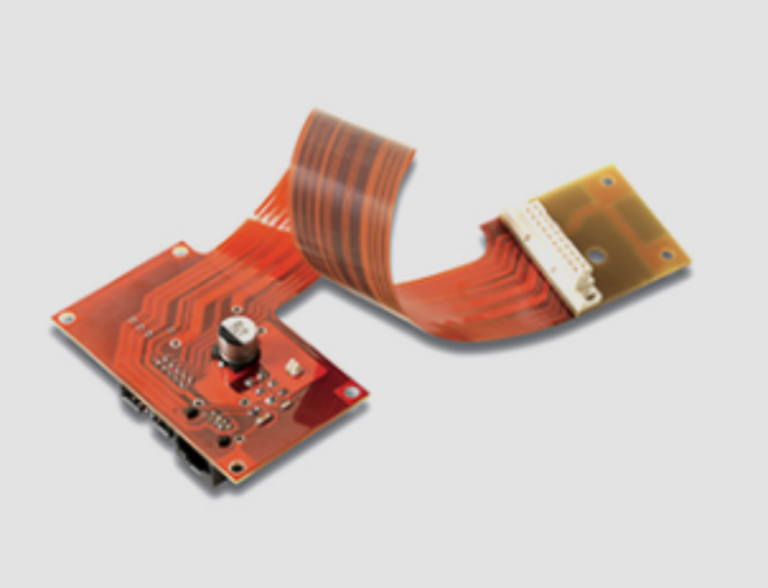Revolutionizing Electronics: The Future of Automated Circuit Board Assembly
Key Takeaways
The transformation of the electronics industry through automated circuit board assembly is undeniable. New advancements in pcb assembly or pcba are driving efficiency and precision like never before. Key technologies, including AI integration and robotics, have played a significant role in automating the assembly process, resulting in substantial reductions in production costs and time. This progress not only enhances product quality but also fuels innovation within the industry. Additionally, automated assembly is providing real-world applications that showcase its effectiveness across various sectors. As the industry continues to evolve, the implementation of these advanced technologies will further solidify their importance in shaping the future of electronics manufacturing.
Introduction: The New Era of Electronic Manufacturing
In today’s rapidly advancing world, the electronics industry is undergoing a significant transformation, driven by automated circuit board assembly. This new era is marked by remarkable strides in efficiency and precision, thanks to innovations that integrate state-of-the-art technologies into the manufacturing process. PCB assembly (PCBA) has evolved from labor-intensive manual methods to sophisticated automated systems that streamline production. The implementation of AI and robotics has not only accelerated production times but also significantly reduced costs, enhancing overall product quality. Automation in PCBA now allows for high scalability, faster turnaround times, and minimal human error, heralding a future where electronics manufacturing reaches unprecedented heights of excellence and reliability.
The Evolution of Automated Circuit Board Assembly
The journey of automated circuit board assembly can be traced back to the early days of electronic manufacturing, where manual assembly was the norm. As technology advanced, so did the methodologies and tools used in the creation of printed circuit boards (PCBs). Initially, PCBs were assembled by hand, a labor-intensive process prone to errors and inefficiencies. However, the introduction of automation marked a significant milestone in the electronics industry.
In the mid-20th century, semi-automated equipment began to surface, reducing human error and speeding up production. This phase saw the advent of basic robotic systems capable of handling repetitive tasks with greater consistency than manual labor. By the late 20th century, fully automated PCB assembly (PCBA) systems began to emerge, driven by innovations in computer technology and mechanical engineering.
Today, these systems have become incredibly sophisticated. Modern PCBA processes involve high-speed pick-and-place machines that can position components with micron-level accuracy. The integration of robots and advanced software algorithms has not only increased precision but also enabled real-time monitoring and adjustments during production runs.
These advancements have resulted in a dramatic reduction in defects and an increase in production capacity. Factories now operate with minimal human intervention, allowing for a more scalable and flexible manufacturing environment. In essence, the evolution from manual assembly to modern automated PCBA represents a leap forward in both technology and efficiency within the electronics industry.
Cutting-Edge Technologies Driving the Industry Forward
In the realm of electronic manufacturing, PCB assembly has become an essential process, and the integration of sophisticated technologies is propelling the industry to unprecedented heights. The advent of automated circuit board assembly systems has given rise to a new standard of efficiency and precision. These systems are powered by a suite of varied technologies, each playing a crucial role in refining PCBA processes.
One such technology is machine vision, which equips machines with the capability to scrutinize circuit boards for quality assurance with greater accuracy than the human eye. This technology ensures that components are correctly placed and soldered, thereby reducing errors and increasing reliability.
Another significant breakthrough in automation is the deployment of advanced robotics. These robots perform a multitude of tasks with remarkable precision and consistency, from component placement to soldering, which streamlines the production line while enhancing speed and quality.
Let’s take a closer look at how these technologies transform key aspects of PCB assembly:
| Technology | Role in PCB Assembly | Impact |
|---|---|---|
| Machine Vision | Error detection and quality control | Increases accuracy; reduces defects |
| Advanced Robotics | Component placement; soldering; handling | Improves speed; consistency; reduces manpower |
| AI Algorithms | Predictive maintenance; process optimization | Decreases downtime; enhances efficiency |
The incorporation of Artificial Intelligence (AI) algorithms represents yet another leap forward. AI can predict maintenance needs for assembly equipment, reducing unexpected downtime that can disrupt production schedules. Moreover, it optimizes assembly processes by analyzing data patterns to identify opportunities for improvement.
Together, these groundbreaking technological advancements are not just shaping the present landscape of PCBA, but also hinting at a future where electronic components are assembled with unparalleled swiftness and exactness. The fusion of high-speed machinery with intelligent algorithms ensures that every board meets stringent standards while maintaining cost-effectiveness—clearly marking automated processes as indispensable for an industry driven by constant innovation.
The Role of AI and Robotics in Automation
In the realm of pcb assembly, Artificial Intelligence (AI) and robotics are emerging as transformative forces driving the automation of production processes. The integration of AI into pcba systems enhances precision and accuracy, minimizing human error and increasing efficiency. Robotics, equipped with robust algorithms, can handle intricate tasks such as soldering, placement, and inspection with unparalleled consistency. These machines are designed to operate around the clock, significantly reducing production time and labor costs while augmenting output quality.
Moreover, machine learning algorithms can analyze vast amounts of data to optimize manufacturing workflows, predict maintenance needs, and improve overall decision-making processes. This symbiotic relationship between AI and robotics paves the way for unprecedented innovation in electronic manufacturing. Autonomous robotic systems adapt dynamically to various assembly scenarios, ensuring flexibility in production lines without compromising on quality or speed.
In essence, the collaboration between AI-driven technologies and advanced robotics is setting new standards in the pcb assembly industry. These advancements not only streamline operations but also foster a culture of continuous improvement within pcba manufacturing environments. As a result, companies can achieve higher levels of productivity while delivering superior products to market faster than ever before.
Reducing Production Costs and Time with Automation
The introduction of automated circuit board assembly has revolutionized the electronics industry by significantly reducing production costs and time. By integrating advanced technologies such as robotics and artificial intelligence, manufacturers can streamline the PCB assembly process, minimizing human error and enhancing efficiency. Automated systems are capable of handling intricate tasks with precision, enabling the rapid production of high-quality PCBA components.
“Automation empowers manufacturers to remain competitive in an ever-evolving market by optimizing resources and reducing operational expenses.”
The use of robotics in automation ensures that repetitive tasks are performed consistently, eliminating deviations that typically occur with manual assembly. This not only accelerates the production cycle but also lowers labor costs by reallocating human workers to more complex, supervisory roles. Moreover, AI-driven systems offer real-time monitoring and predictive maintenance, reducing downtime and ensuring uninterrupted manufacturing processes.
As a result, companies can produce large volumes of electronic products swiftly while maintaining stringent quality standards. This level of efficiency allows for quicker time-to-market, enabling businesses to meet consumer demand promptly and capitalize on emerging trends. In essence, automated circuit board assembly represents a pivotal shift toward more cost-effective and time-efficient electronic manufacturing.
Enhancing Product Quality Through Precision and Innovation
The PCB assembly process has undergone significant advancements, transforming how electronic products are manufactured. Central to this transformation is the integration of automated systems that provide unparalleled precision and innovation. By leveraging cutting-edge technologies such as laser-guided placement and advanced soldering techniques, manufacturers can achieve superior accuracy in component alignment and solder joint formation. These innovations not only enhance the overall quality of the final product but also significantly reduce the margin for error, ensuring that each PCBA meets stringent industry standards. Furthermore, the use of robotics in automated assembly allows for consistent performance and repeatable high-quality results, which are critical in sectors such as automotive, telecommunications, and consumer electronics. This level of precision has led to fewer defects, reduced rework costs, and increased product reliability, effectively setting a new benchmark for excellence in electronic manufacturing. Automated PCB assembly is thus at the forefront of driving innovation and upholding quality standards across various applications, making it an indispensable component of modern electronics production.
Key Industry Applications and Real-World Examples
In recent years, automated circuit board assembly has found robust applications across various sectors, transforming how industries approach electronic manufacturing. The pcb assembly processes have notably impacted the consumer electronics sector, where speed and precision are paramount for mass production. By integrating AI and advanced robotics, manufacturers achieve unparalleled efficiency, ensuring each PCBA is of the highest quality.
For instance, in the automotive industry, automated systems enhance the reliability of vehicle control systems by delivering precisely assembled boards that meet stringent quality standards. Similarly, medical device manufacturers rely on automated PCB assembly for producing intricate diagnostic equipment that must adhere to rigorous regulatory requirements.
Moreover, telecommunications companies benefit hugely from automated assembly lines. The need for complex and highly reliable circuit boards in networking equipment makes automation an invaluable asset. Each PCBA, crafted with meticulous accuracy through automation, ensures consistent performance across vast communication infrastructures.
Another critical application lies within aerospace industries which demand the utmost reliability and performance in their electronic components. Automated circuit board assembly processes provide the necessary precision and consistency to meet these high stakes.
These real-world applications underscore how the adoption of automated circuit board assembly is paving new pathways in technological advancements, driving down costs while elevating product standards across various pivotal industries.
Future Prospects and Industry Trends in Automated Assembly
As we look ahead, the future of automated circuit board assembly holds immense promise for the electronics industry. One of the significant trends is the integration of artificial intelligence (AI) with robotics, which continues to drive advancements in PCBA processes. AI enables more sophisticated machine learning algorithms to predict maintenance needs and optimize production schedules, thus significantly reducing downtime and enhancing efficiency.
Moreover, innovations in robotics are contributing to increased automation capabilities, allowing for higher precision and repeatability in PCB assembly. These advancements not only accelerate production speeds but also ensure consistent quality across large batches of products.
The industry is also witnessing a surge in the adoption of smart factories, equipped with Internet of Things (IoT) devices that facilitate real-time monitoring and data analytics. This connectivity helps manufacturers make informed decisions quickly, thereby optimizing the entire production pipeline.
Additionally, there are ongoing efforts to develop eco-friendly materials and processes within automated assembly systems, aimed at sustainability and reducing environmental impact.
Looking forward, the convergence of these technologies signifies a new chapter for PCBA, making it possible to achieve unprecedented levels of efficiency, precision, and cost-effectiveness. As these advancements continue to evolve, they will undoubtedly reshape the landscape of electronic manufacturing, setting new benchmarks for industry standards globally.
Conclusion
In summary, automated circuit board assembly is undeniably revolutionizing the electronics industry. With the integration of cutting-edge technologies such as AI and robotics, the process has seen marked improvements in both efficiency and precision. This automated approach not only reduces production costs and time but also enhances the quality of electronic products. Organizations embracing these innovations in PCB assembly (PCBA) are positioned to lead in a rapidly evolving market. As we look to the future, it’s clear that automated assembly will continue to play a pivotal role in shaping the next generation of electronic manufacturing advancements.
FAQs
Q: What is automated circuit board assembly?
A: Automated circuit board assembly (also known as pcba) refers to the use of machinery and advanced technology to assemble electronic components onto printed circuit boards (pcbs). This process significantly enhances manufacturing efficiency and precision.
Q: How does automation improve pcb assembly?
A: Automation improves pcb assembly by incorporating cutting-edge technologies like robotics and artificial intelligence. These technologies ensure high accuracy and speed, reducing human error and increasing overall productivity.
Q: What are the main benefits of automated circuit board assembly for manufacturers?
A: Manufacturers benefit from reduced production costs, shorter production cycles, and improved product quality. Automation allows for consistent results, thereby enhancing innovation in electronic manufacturing.
Q: What role does artificial intelligence play in automated pcb assembly?
A: Artificial intelligence plays a critical role by optimizing processes through advanced algorithms. It enables real-time adjustments and predictive maintenance, ensuring that the assembly process is both efficient and reliable.
Discover More about PCB Assembly
To learn more about automated PCB assembly and its transformative impact on the electronics industry, please click here.






